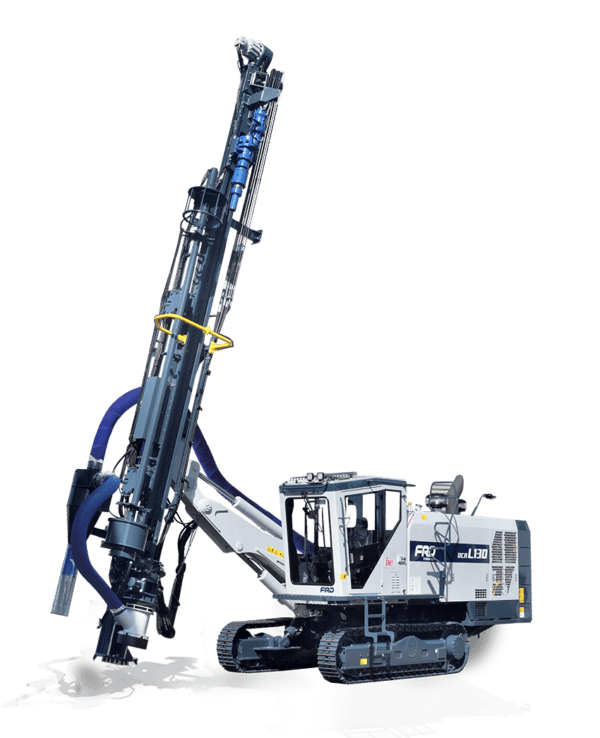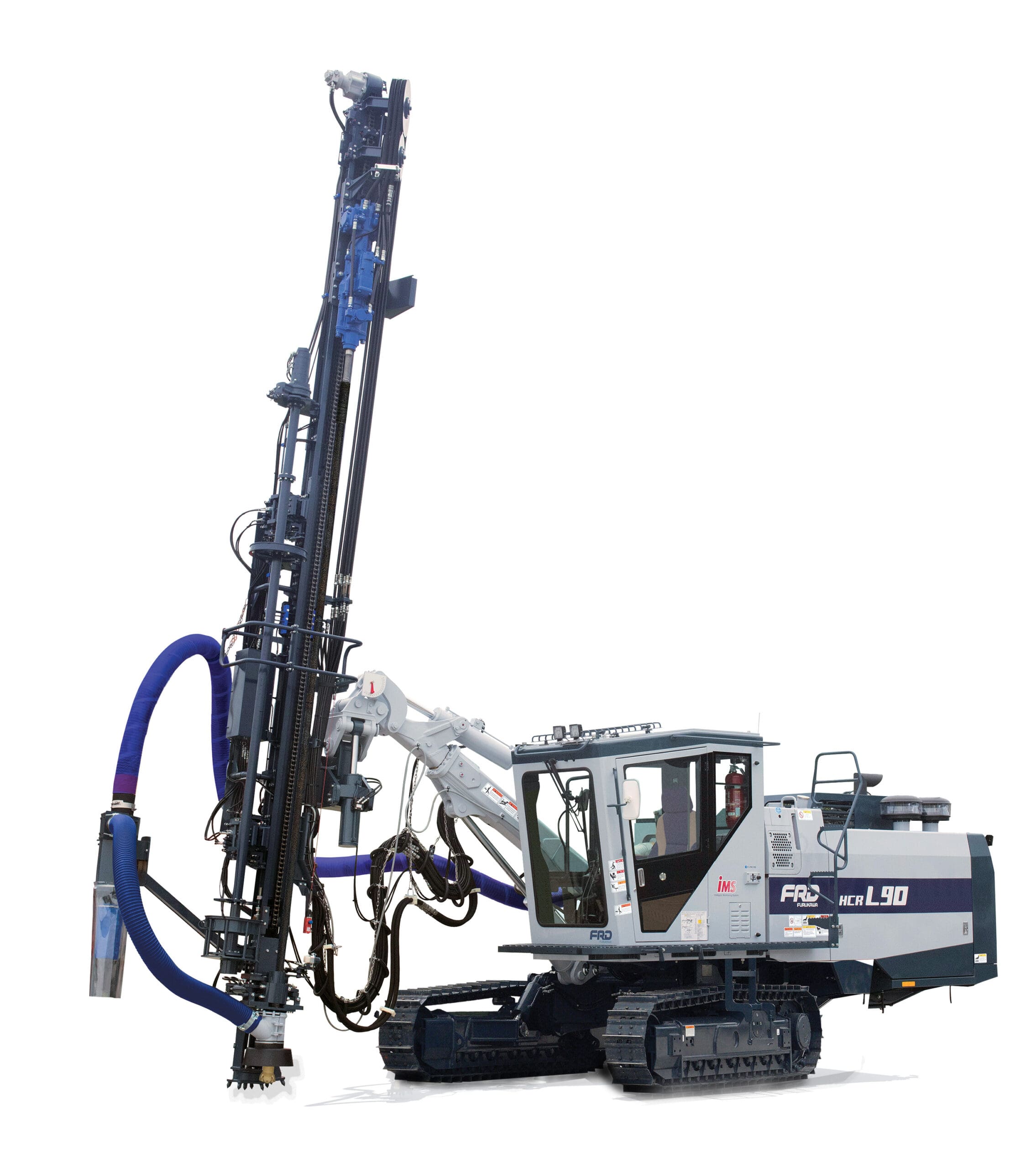DTH or Top-Hammer Drill? Comparing Two Types of Rock Drills
What’s the difference between a down-the-hole (DTH) drill and a top-hammer drill? Is it better to have the hammer in a blasthole drill at the bottom of the hole being drilled or at the top of the hole? The answer depends mostly on the job site where blastholes need to be drilled to maximize productivity and efficiency—whether it’s a quarry, mine or construction project.
Following is a brief overview of how DTH drills differ from top-hammer drills:
Down-The-Hole (DTH) Drills

Top-Hammer Drills

DTH drills get their name from the fact that the percussion mechanism (hammer) is at the bottom of a drill string, which is located down the hole. DTH drills are commonly used in quarries and mines because they can drill straight and deep holes with greater penetration in hard rock and tough conditions for a larger shock pattern.
DTH drills rely on three elements for drilling holes: bit loading (weight), rotation and air. These elements combine to be efficient at crushing rock. As the drill string slowly rotates, the drilling hammer is forced into the rock repeatedly. Striking power is provided by compressed air driving a piston inside the hammer. DTH drills are typically larger machines that remain on the job site.
With the hammer down the hole, power loss is minimized as the hole gets deeper. Energy is not lost in the drill string and penetration rates do not significantly drop with added depth. DTH drilling is most suitable for hole diameters of 4–10 inches, with some exceptions. DTH drilling generally produces less vibration compared to top-hammer drilling, leading to more accurate hole placement.
Unlike DTH drills, top-hammer drills have the hammer located above ground level, on the surface of the drill rig. They have a long rod known as a drill string with a bit attached to the end. Just like a chisel being hit by a hammer, the top of the drill string is hit by a hammer—known as a drifter—to crush the rock.
Top-hammer drills are smaller than DTH drills and make smaller holes for faster drilling in less resistant rock formations (softer to medium-hard rock). This method is the most suitable for hole diameters between 1–5 inches and hole depths of generally less than 80 feet. They are typically used on construction sites where maneuverability on uneven terrain and in tighter spaces is needed. Because they’re smaller, top-hammer drills are also easier to transport to job sites, making them good for building new roads or pipelines, running new utility lines, and more.
One downside of top-hammer drills is that the deeper the hole, the more the impact energy weakens as it is being transmitted along the drill string, which tends to lower the performance.
A Complete Line of Rock Drills
It’s important to pick the rock drill that is most suitable for the type of drilling conditions that will likely be encountered, which starts with understanding the difference between a down-the-hole (DTH) drill and a top-hammer drill.
Check out FRD USA’s complete line of reliable, cost-effective blasthole drills and accessories for construction and quarry sites.